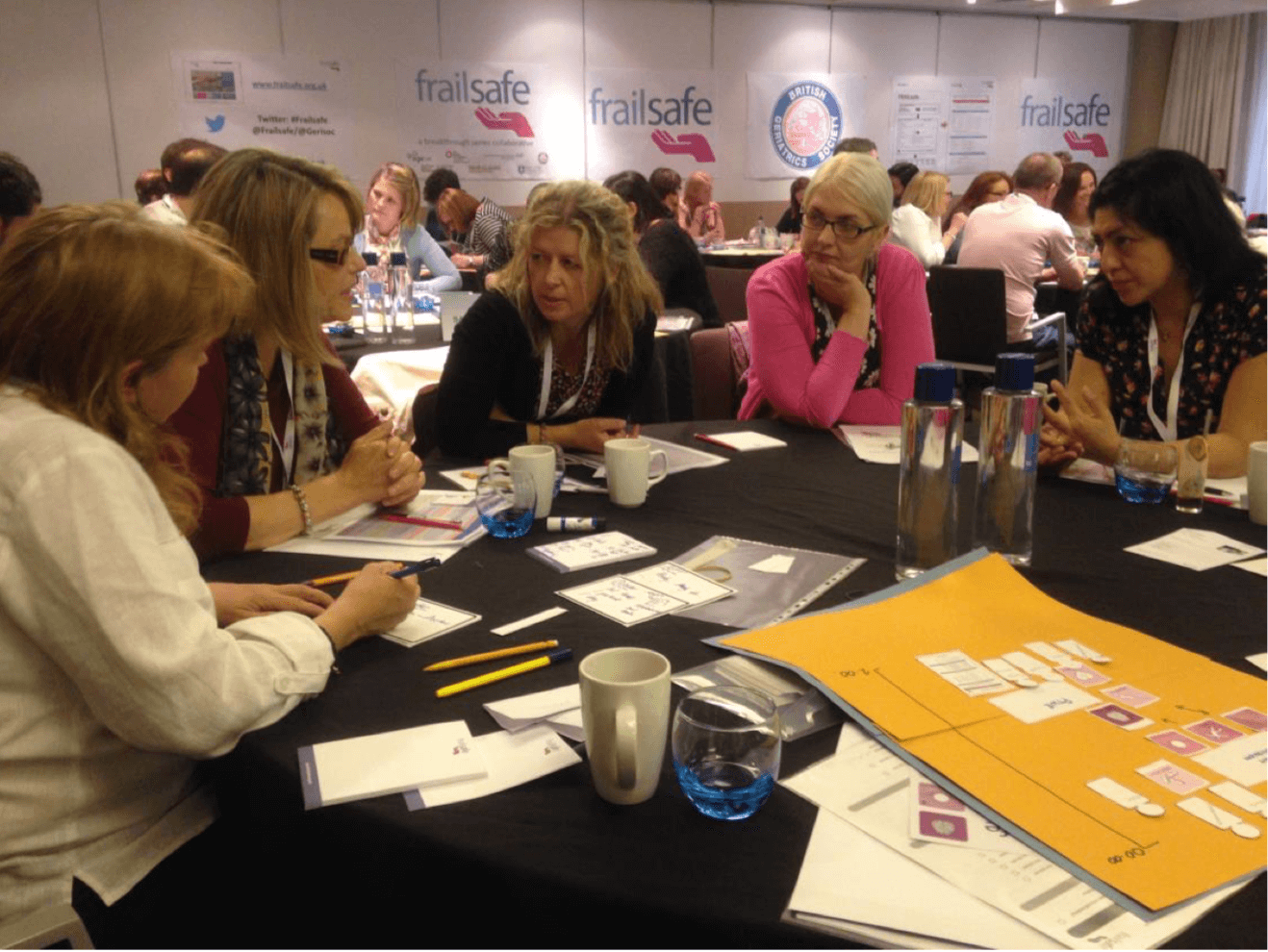Funded by :
Health Foundation
Partners:
British Geriatrics Society
Sheffield Teaching Hospitals NHS Foundation Trust
Age UK
Evaluation Partner : NW London CLARHC
Royal College of Physicians
Project team:
Paul Chamberlain
Rebecca Partridge

This project explores opportunity for design beyond the creation products and focuses on how design might help change culture and behaviour within a health care environment to improve the safety of frail older people admitted to hospital. frailsafe was created to explore whether a check and challenge approach could be translated into the complexity of acute medical care and safety of older patients. The project was was supported through the Health Foundation as part of the Breakthrough Series designed to help organizations by creating a structure in which they can easily learn from each other and from recognized experts in topic areas where they want to make improvements.

International studies indicate that approximately 10% of all patients who are admitted to hospital suffer some form of adverse event (AE). An AE can be defined as an unintended harm to a patient resulting in injury, death or a prolonged admission. Older people are more likely to suffer AEs and the consequences of an AE are often more severe in frail, older patients.
12 hospitals were purposively sampled to replicate the proportion of patients in District General / Teaching and Urban / Rural settings around the UK.
Design researchers were involved more than 100 hours across the 12 hospitals shadowing different health professionals, following ward rounds, board rounds, triage meetings, handover discussions and multidisciplinary (MDT) meetings.
In addition three two-day residential learning sessions located away from the immediate local pressures of work were scheduled over the duration of the project. These offered a creative space to collaboratively engage through a series of Design activities that were developed and facilitated by the design researchers.

Staff found their participation in the improvement team as one of the most rewarding aspects of the project and showed spill-over effects in the wards. The project provided a platform and protocols for increased multidisciplinary working and enhanced communication on what constitutes good care for older patients in AMU.

In addition to co-designing with hospital staff a series a videos were co-created with older people to explore the notion of frailty from a personal perspective.
The research highlights the scope for designers to facilitate co-design that can be embedded as a lasting legacy in communities helping them to learn from each other through improved communication and empowering them to create and implement their own new ideas.

 to top
to top
